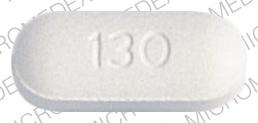Aspirin/butalbital and Alcohol/Food Interactions
There are 3 alcohol/food/lifestyle interactions with aspirin / butalbital.
Aspirin Caffeine
Minor Drug Interaction
Information for this minor interaction is available on the professional version.
Butalbital Alcohol (Ethanol)
Major Drug Interaction
Ask your doctor before using butalbital together with ethanol (alcohol), this can add to dizziness, drowsiness and other side effects of butalbital. Be careful if you drive or do activities that require you to be awake and alert. Talk with your doctor before using any medications together, or drinking alcohol with butalbital. It is important to tell your doctor about all other medications you use, including vitamins and herbs. Do not stop using any medications without first talking to your doctor.
Aspirin Alcohol (Ethanol)
Moderate Drug Interaction
Ask your doctor before using aspirin together with ethanol (alcohol). Do not drink alcohol while taking aspirin. Alcohol can increase your risk of stomach bleeding caused by aspirin. Call your doctor at once if you have symptoms of bleeding in your stomach or intestines. This includes black, bloody, or tarry stools, or coughing up blood or vomit that looks like coffee grounds. It is important to tell your doctor about all other medications you use, including vitamins and herbs. Do not stop using any medications without first talking to your doctor.
Switch to professional interaction data
Aspirin/butalbital drug interactions
There are 831 drug interactions with aspirin / butalbital.
Aspirin/butalbital disease interactions
There are 20 disease interactions with aspirin / butalbital which include:
- coagulation
- acute alcohol intoxication
- drug dependence
- liver disease
- porphyria
- rash
- respiratory depression
- asthma
- GI toxicity
- renal dysfunction
- Reye's syndrome
- adrenal insufficiency
- depression
- hematologic toxicity
- osteomalacia
- paradoxical reactions
- anemia
- dialysis
- G-6-PD deficiency
- hepatotoxicity
More about aspirin / butalbital
- Check interactions
- Compare alternatives
- Drug images
- Side effects
- During pregnancy
- Drug class: analgesic combinations
Related treatment guides
Drug Interaction Classification
| Highly clinically significant. Avoid combinations; the risk of the interaction outweighs the benefit. | |
| Moderately clinically significant. Usually avoid combinations; use it only under special circumstances. | |
| Minimally clinically significant. Minimize risk; assess risk and consider an alternative drug, take steps to circumvent the interaction risk and/or institute a monitoring plan. | |
| No interaction information available. |
See also:
Further information
Always consult your healthcare provider to ensure the information displayed on this page applies to your personal circumstances.


